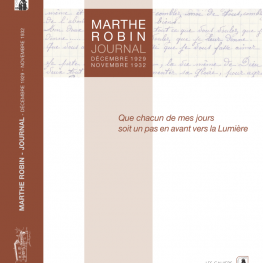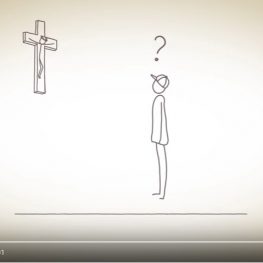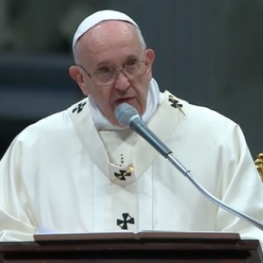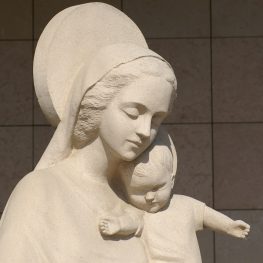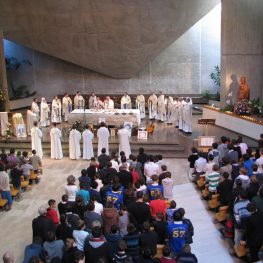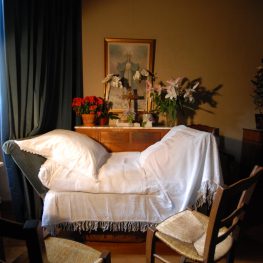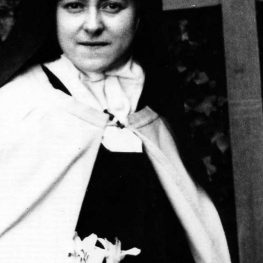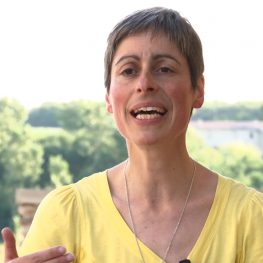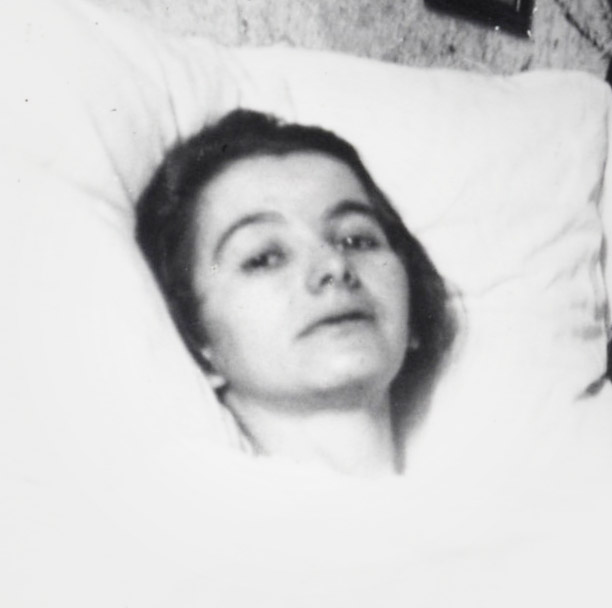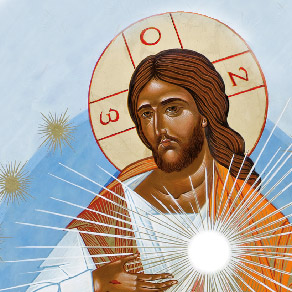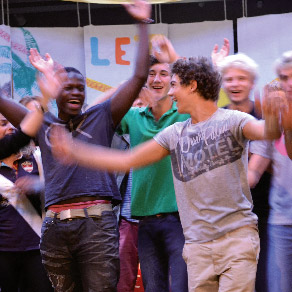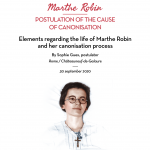Le cheminement intérieur de Marthe Robin est dévoilé grâce à la publication de son "Journal". Découvrez-le en ligne...
Immense influence
Marthe, the Second Vatican Council and the vocation of each baptised person
Excerpts from the conference of Bishop Paul Cordès (Pontifical Council for the Laity), given in 1993 at the meeting of the Foyers de Charité in Châteauneuf-de-Galaure
You have very kindly invited the Pontifical Council for the Laity to meet with you. [...] I am delighted to be here and to confirm the ties of our Council with the Foyers de Charité. We would like to emphasise the hope that they are for the Church throughout the world. [...]
The other reason for my presence among you is the woman to whom the Foyers of Charity owe their existence. You all know her life and her work better than I do. However, I would like to speak about this today – if only very briefly – because of the astonishing influence she has had on all kinds of lay groups in particular. She has contributed to the foundation of so many new communities that she can be considered to be a kind of midwife who participated in the birth of the lay movements after the Council in France.
Marthe Robin's encouragement to the new communities
Even before the beginning of the Council in 1943, Marthe had met Sr Madeleine, the founder of the Little Sisters of Jesus. Then the two women continued to meet each other about once a year. Little Sr Madeleine confides, "Marthe commands a very important place in my life. I spoke very little about it because I did not want encourage an excessively curious attitude towards extraordinary phenomena among the Little Sisters. But from the very beginning of the Fraternity, a combination of circumstances led me to her in spite of myself. And very quickly, we formed a very strong bond. Every time there was something difficult in the Fraternity, I would entrust it to him, or write to her about it. She offered much of her suffering for the Fraternity.”
A dynamic member of the Young Christian Workers association sought to have a similar spiritual exchange with Marthe: her name was Thérèse Cornille. In 1946, she founded the "Claire Amitié" association, because she had been moved by the situation experienced by many young women coming from the world of prostitution who were living without any support whatsoever, some in total poverty, with or without children. Thérèse wrote, "after the creation of two shelters for young homeless people – French or foreign marginalised youth, suffering from great solitude, without a home and without love – in the north of France in 1946, with the enthusiastic approval of my Bishop, Cardinal Lienard, I felt passionate about this cause and I spoke from the heart... Marthe listened very attentively and was sensitive to the living conditions of these abandoned young people. She was also very encouraging, saying, "O you're so right to take care of these young ones... Jesus loves them so much... Promise me that you will come back to talk to me about it. " Each of her words had a profound significance for us, and we have always taken this into consideration in our apostolic work.”
The founder of the "Nid" (nest), Fr Talvas, also met Marthe in 1949. Later, he said he was very impressed by Marthe's common sense and marvelled at her intimacy with Mary. Let's listen to him: "In Marthe's room, we admired and appreciated her understanding of the universal Church, her love of the Holy Father, priests and children. – 'Oh yes, Our Lady!' exclaimed Marthe. These women, who have not been loved, have so much need of the tenderness of a mother. She is the one who will lead them to Jesus."
During the founding phase of the "Focolari", its members also turned to Marthe (1962). They said, "it was a very powerful experience and in the end, Marthe Robin concluded, 'I feel like St John the Baptist who prepared the way of the Lord, while I see that your work is like Mary, it is Mary.' " The Focolari are now called "The Work of Mary".
Jean Vanier and his "Arche" were guided in the same way, as well as the charismatic Emmanuel community and the "Faith and Light" group. Marthe's influence in the development of the Beatitudes community is not negligible. (...)
An instrument of God for discipleship and evangelisation
Marthe Robin's considerable work and the image she conveys have fuelled a great deal of Christian thought. I would like to take the opportunity of this visit to clarify a few things. Indeed, Marthe was God's instrument of discipleship and evangelisation despite not being appointed by an ecclesiastical body, not being part of the hierarchy, not having a particularly prominent position and not having had a position of influence as a woman in a religious order (like a St Hildegard or a Mother Teresa). Even though all of us, who have known Marthe for a long time, have become so used to this fact that we are no longer surprised by it, it may be worth our while today to realise how amazing this is. In any case, we absolutely cannot look at this as something that goes without saying. The theological principles behind these events give us reason to thank God not only for Marthe Robin but also for the changes that have occurred in the Church in recent years.
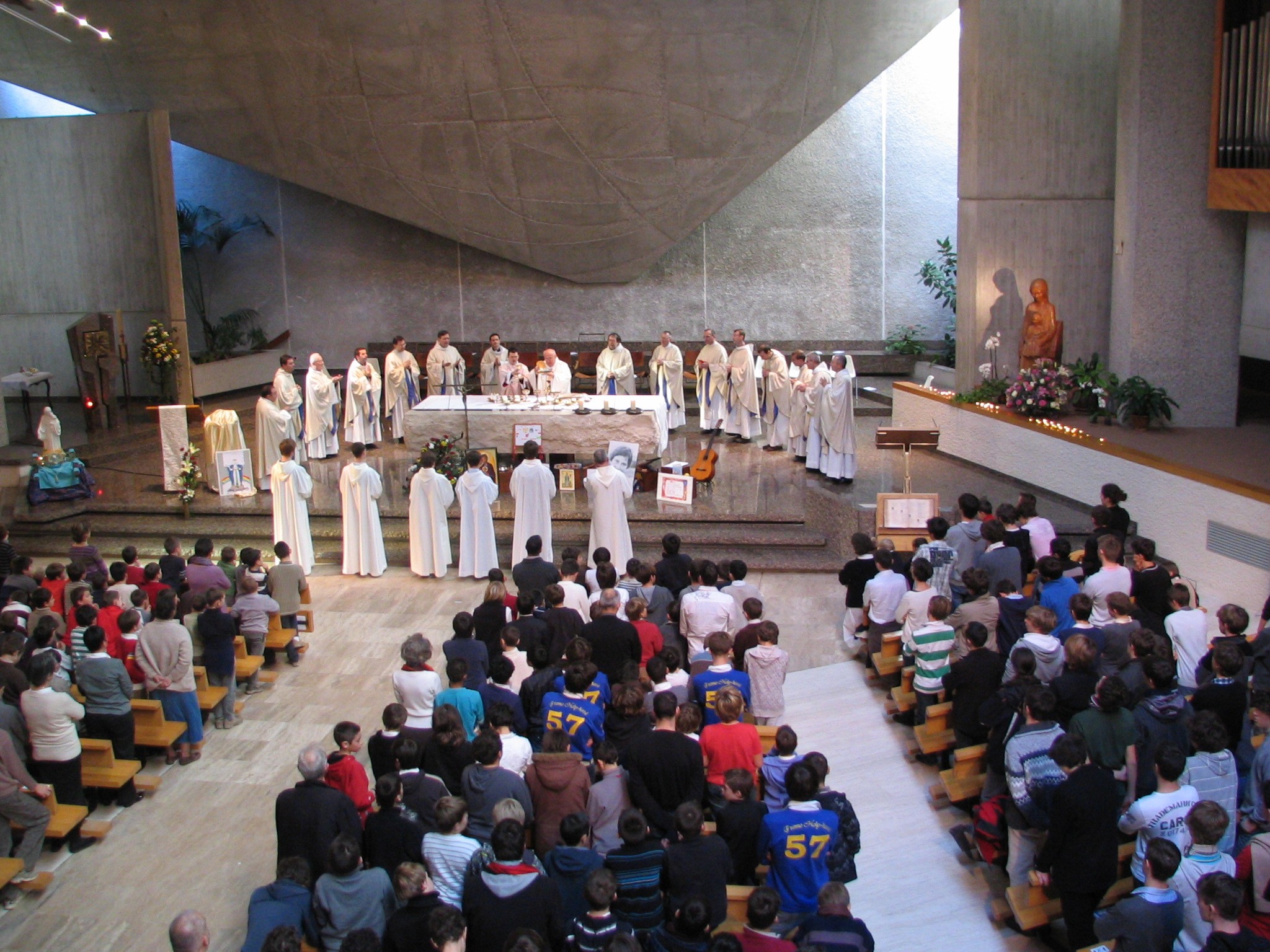
Implementation of the guidelines of the Second Vatican Council
Marthe belonged to the Church members known as the Christifideles laici since the Synod of Bishops of 1987. In a way, the synod had drawn a line under the theological developments that had begun with the Second Vatican Council and which highlighted the dignity as well as the responsibility of all the baptised for the mission of the Church. This can be seen by simply considering the development process that led to the constitution of the Church, called Lumen Gentium, during the Second Vatican Council. Immediately noticeable in the drafting process of this document were the substantial changes made by the Council on the cohabitation of Church members. The initial version of the constitution wanted to deal with the hierarchical order in the Church first of all, followed by the issue of baptism and the matter of the laity as members of the Church, after the chapter on biblical images. The fathers of the Council chose a different order. They swapped the 2nd and 3rd chapters around, so that in the final version it starts with a presentation of the Church as a whole: the common dignity of all the members of the Church, which surpasses any difference - a dignity conferred by baptism, through which they become sons of God. Then comes the structure of the Church, which is obviously important, because it is tied to the Sacrament of Order.
The dignity of the baptised
The greatest dignity of Marthe is also that of having been baptised. We must not forget that, in her understanding of faith and atonement, she lived out the fullness of her baptism before anything else: dying with Christ and rising with him. On this key date for Christians, Marthe is above all a sister and an example, and an extraordinary example at that, for the members of the Foyers, or should I say, for every member of the Church. In this, we are all closely and inseparably in community with Marthe.
Even if she accepted her mission before Vatican II, it is an incredible fulfilment of what the Council put into words regarding each baptised person. What John Paul II wrote in his encyclical Dominum and vivificantem of 8 May 1986 could almost have been written specifically for the Foyers, Marthe's foremost foundational work:
"In recent years, the number of people who have made prayer a priority and joined a movement or one of these increasingly common groups seeking spiritual renewal, is on the rise. This is an important and comforting sign because such an experience truly contributes to the renewal of prayer among believers. It helps them, in the presence of the Holy Spirit, to find the one who awakens a deep thirst for holiness in their hearts." (no. 65)
Marthe's recommendations are valid for lay initiatives. The prophetic words, by which she showed the way forward for the groups mentioned above, have encouraged initiatives of the laity and for the laity. Here again, she belongs to the page in Christifideles in which the pope gives an excellent testimony in his post-synodal writing on the laity: he speaks of a new time of union between the laity. It praises the richness and diversity of the gifts that the Spirit keeps alive in the Church, as well as the willingness and generosity of the laity to propose new initiatives (see Christifideles laici, no. 29).
